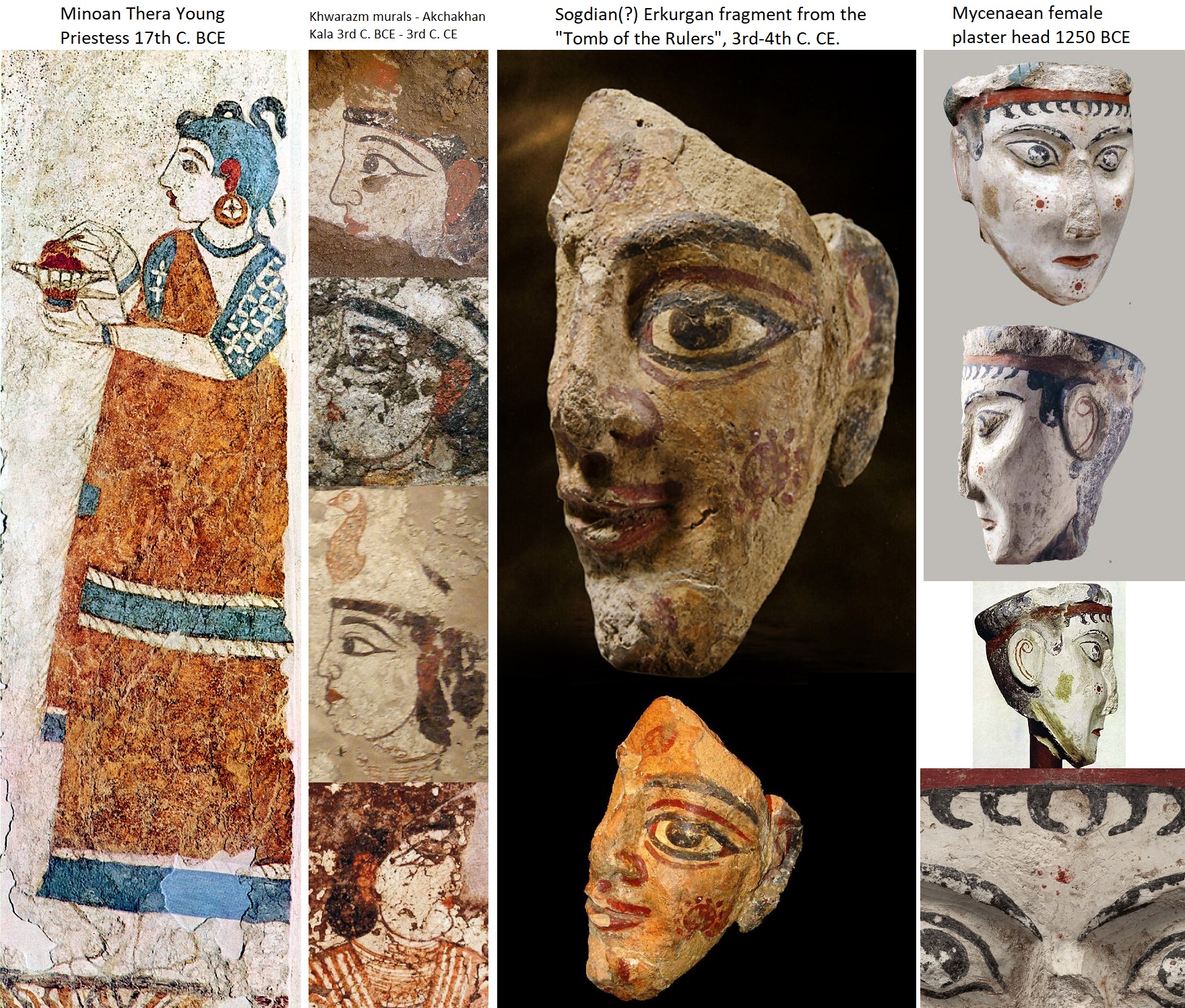Comparison of Minoan, Mycenaean, Sogdian, & Khwarazm artworks 17th C. BCE - 4th C. CE
When I came across the Khwarazm (aka Chorasmian) murals I remembered this red-eared priestess from Thera. Their large eyebrows, red-painted ears, extremely light skin tone, and general facial features look very similar to each other despite being over 1,000 years apart and in different regions of the world. Other than that their clothing, jewelry, and hairstyle are quite different. I couldn't figure out what the significance of the red ears were, though Jason Earle speculates it might be an artistic depiction of a person hearing something divine from a deity (Cosmetics and Cult Practices in the Bronze Age Aegean? A Case Study of Women with Red Ears). These are the only images I've come across, that I can recall, of people with their ears painted red so I felt like comparing them.
The Erkurgan fragment has red solar symbols very similar to the Mycenaean plaster head. Again these two pieces of art are over 1,000 years apart and in different geographic locations. I don't know who the Erkurgan fragment should be attributed to, but this was a place in the heart of Sogdiana. I assume it represents a Sogdian because of location and time period, but that's just my assumption. Solar symbols appear in basically all civilizations, but I've never come across these specific red styled ones (that I can recall) except in these two instances. In both instances they appear on the cheeks, forehead, and probably the chin (the Erkurgan fragment's chin is damaged but seems to have some red paint). Again, seeing this unique symbol made me feel I should compare the two. From what I've read all the images here are generally thought to be depictions of females with religious significance.
Sources:
I have sources for images listed on my other posts, I'm too lazy to grab them all so I'm just going to link to my other posts:



Comments
Post a Comment